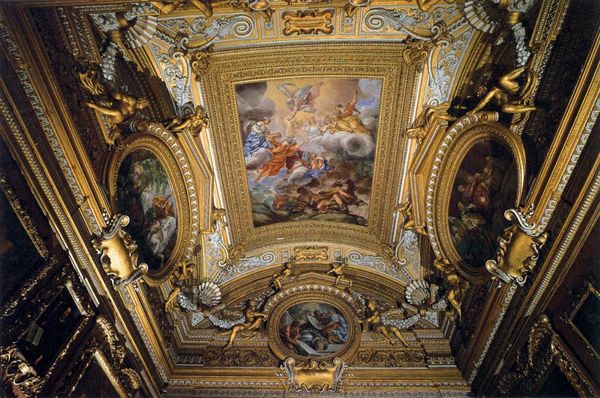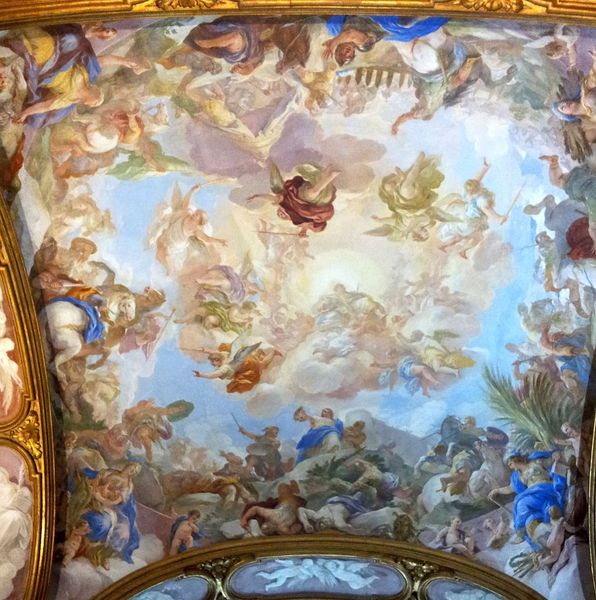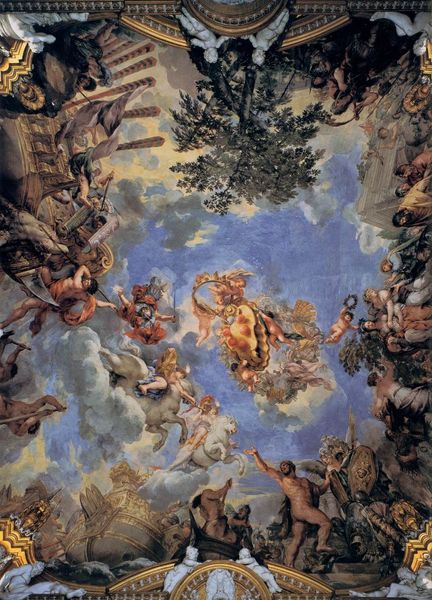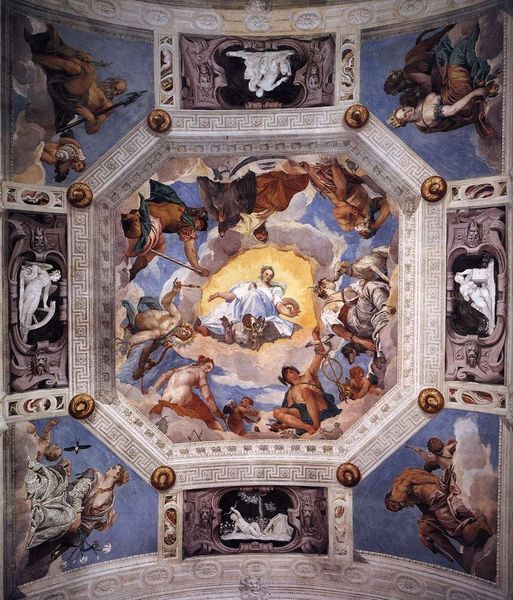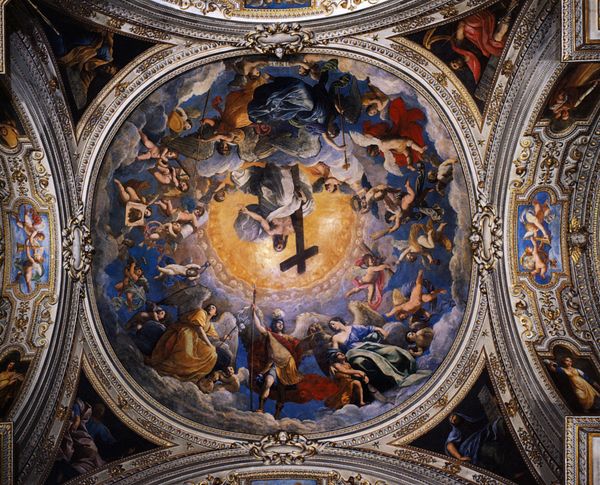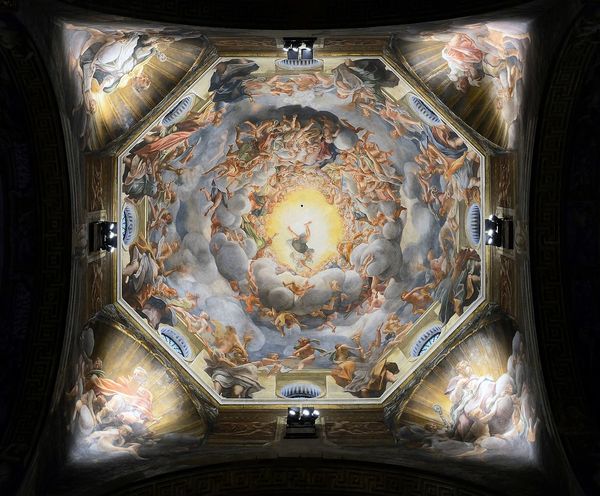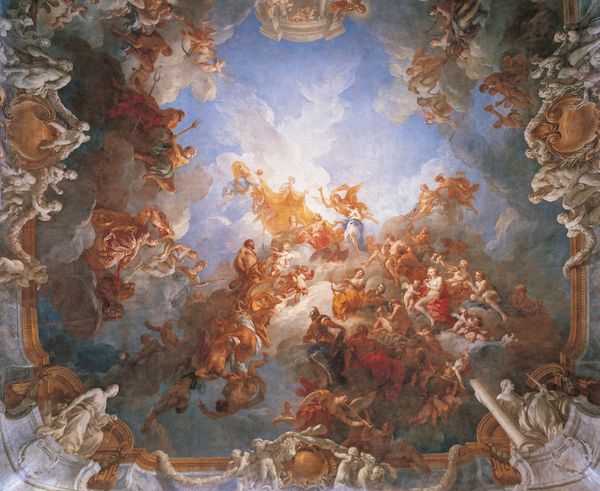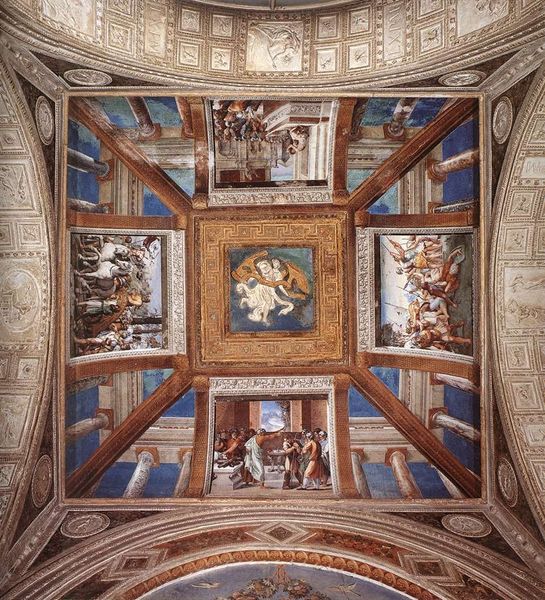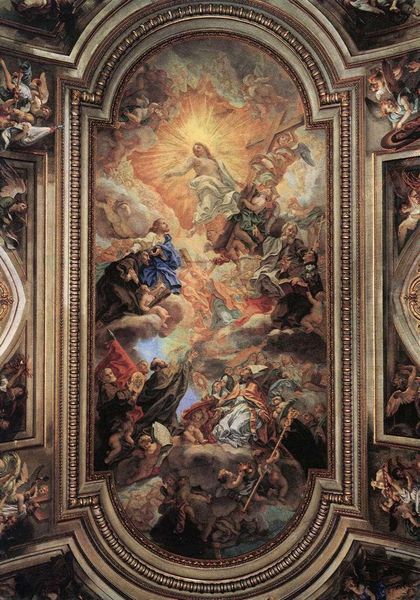
painting, fresco
#
allegory
#
baroque
#
painting
#
landscape
#
figuration
#
fresco
#
history-painting
#
italian-renaissance
Copyright: Public domain
Curator: What a breathtaking sight. This is Luca Giordano's "Decorative Ceiling" created in 1686 for the Palazzo Medici Riccardi. It is an exceptional example of Baroque fresco painting. Editor: My immediate impression is one of being completely overwhelmed, but in a good way. The sheer scale of it and the swirling figures draw you into a dreamlike state. It is also surprisingly full of light, considering the heavy subject matter. Curator: Indeed, it's a powerful statement of Medici authority during a period of significant political shifts. These elaborate allegories weren’t mere decoration; they were instruments to convey specific ideologies of wealth, status, and political agenda. Notice how Giordano masterfully manipulates perspective, creating a sense of infinite space, which at the time conveyed unlimited power. Editor: The eye is drawn upward through layers of figures, light, and symbolism. There are astrological references there; one can identify Taurus. Given the Medici interest in science, mathematics, and the occult, were these astrological elements intended to be understood by contemporaries? Curator: Absolutely. Symbols related to mythology, the cosmos, astrology and the zodiac were immediately accessible to the Medici circle and communicated knowledge. This particular decorative program reflects the sophisticated and intricate network of political relationships. Editor: There's an undeniable theatrical quality. Look at the dramatic gestures and dynamic compositions! Each character and their interactions carry a distinct emotional charge and feel staged for maximum effect. Curator: Baroque art thrived on grand spectacle and emotional intensity, very different from the more static, controlled styles. And, in frescoes such as these, Baroque artists promoted their own skills of speed. Editor: Looking at the iconography closely really allows one to appreciate the cultural continuity of these images from ancient myths right to their adaptation in the service of Italian nobility, reinforcing their lineage and historical significance. Curator: A potent display of visual persuasion meant to solidify dynastic legitimacy and assert absolute control, very important for understanding this painting as an emblem of Medici's grand political design. Editor: This close look has definitely deepened my understanding and appreciation for how visual symbols operate on many different levels at once. Curator: And has given me insights to better appreciate the role this remarkable artwork played in the political and cultural landscape of its time.
Comments
No comments
Be the first to comment and join the conversation on the ultimate creative platform.

